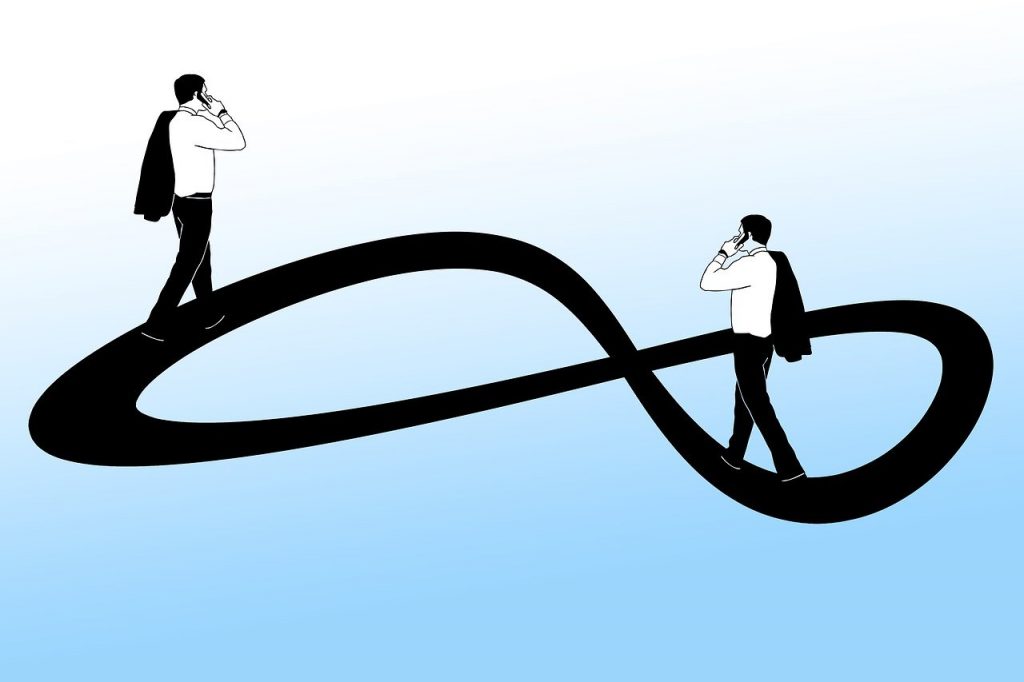
GUEST POST from Janet Sernack
Most of us are aware that both the organizational leadership and cultural paradigms have shifted, due to the accelerating demands of the current global VUCA/BANI operating environment. Requiring us to make sense of and navigate the paradoxical nature of innovation leadership. By developing multiple perspectives to re-think how to respond positively and creatively to the high levels of tension and range of massive disruptions we collectively face in our current high-speed, constantly changing, global operating environments.
According to Otto Scharmer in a recent article for Resilience Magazine, we are facing a looming paradox – “we know almost everything that is necessary to prevent civilizational collapse – we have most of the knowledge, most of the technologies, and all the financial means necessary to turn things around – and yet we are not doing it”.
To truly differentiate ourselves and do the “right things” as adaptive and agile 21st-century leaders, and coaches, it’s crucial to learn the “soft skills” required to cultivate true, and relevant multiple perspectives. To better serve people and unlock and mobilize their collective genius to co-create a future that is regenerative, peaceful, and just, for all of humanity.
What is a paradox?
In a White Paper – Managing Paradox, Blending East and West Philosophies to Unlock Its Advantages and Opportunities from the Center for Creative Leadership, authors Jean Brittain Leslie, Peter Ping Li, and Sophia Zhao, use the term “paradox as a general term to describe the tensions individuals face due to the coexistence of conflicting demands”.
That a paradox can also be described as tensions, dilemmas, conundrums, polarities, competing values, and contradictions, and have these principles in common:
- It is often difficult to see the presence of paradoxes in organizational life and in a VUCA and BANI world.
- They are not problems that can be solved, as they are often unsolvable.
- They are of cyclical or recurring nature.
- They can polarize individuals into groups.
- They are potentially positive when managed.
- Managing paradox involves developing a mindset (and perspective) beyond “either/or” logic (A is either B or not B).
Polarity is the preferred term used in long-time practitioner Barry Johnson’s work. Duality is also used, referring to the yin-yang perspective on a paradox – a pair of opposite elements that can be both partially conflicting and partially complementary.
Mastering the paradoxical nature of innovation leadership requires developing the soft skills to hold two trains of competing or complementary thoughts, or perspectives, simultaneously. This enables innovation leaders to connect to, explore, navigate, and discover new territories to sense possibilities, seize opportunities, and simultaneously solve complex systems and challenging problems differently – in ways that add value to the quality of people’s lives they appreciate and cherish.
Why is it important to navigate a paradox?
Innovation leadership involves cultivating a paradoxical mindset that enables us to work outside of the “either/or” binary and logical perspective and work within the “both/and” non-logical and multiple perspectives, by knowing how to see both the:
- Perspectives clearly,
- Positive and negative consequences of each perspective,
- Interrelationship and interdependence between each perspective.
Shifting perspectives – Taking a skills-based approach
A recent MIT Sloane article “Taking a skills-based approach to culture change” reinforces how important it is to support digital, cultural, and other transformation initiatives by developing people’s “soft skills”, through innovation leadership learning initiatives, specifically to develop the thinking skills required to hold multiple perspectives:
“Unlike most types of culture initiatives, a skills-based approach can more effectively infuse new culture components into scale-ups and international incumbents alike. This approach is particularly effective for developing what many refer to as soft skills, such as perspective-taking. This ability to step outside one’s own perspective to understand another person’s point of view, motivations, and emotions helps build a psychologically safe environment in which people dare to share ideas and unfiltered information”.
- Developing perspective-taking skills is fundamental to mastering the paradoxical nature of innovation leadership. It enables leaders and coaches to connect to, explore, navigate, and discover new territories to catalyze and harness people’s collective genius and shift perspectives differently.
- Developing the 21st-century leadership superpowers necessary to reimagine, reinvent, design, and deliver innovative solutions to complex and challenging problems.
Making the shift – Taking the first steps
Barry Johnson’s work states that:
“Managing paradox involves moving from focusing on one pole as the problem and the other as the solution (either/or thinking) to valuing both poles (both/and thinking)”.
This is supported by a recent article “The Six Paradoxes of Leadership” by PWC:
“Paradoxes are not new to leaders, but they are becoming have become increasingly important for leaders to navigate”.
Drafting six key questions for leaders and coaches to consider by hitting their “pause buttons” and directing their focus and attention:
“The most urgent in today’s context and will remain important in the future. The paradoxes should be considered as a system; they impact each other and all need to be balanced simultaneously. To truly differentiate yourself as a leader, learning how to comfortably inhabit both elements of each paradox will be critical to your success.”
These multiple perspective-shifting questions include:
- How might you, as both a leader (and coach) learn how to navigate a world that is increasingly both global and local?
- How might you, as both a leader (and coach), learn how to navigate both the politics of getting things to happen and retain your character and integrity?
- How might you, as both a leader (and coach) develop the confidence to act in an uncertain (and BANI) world and the humility and vulnerability to recognize when you are wrong?
- How might you, as both a leader (and coach) learn how to execute effectively whilst also being both tactical and strategic?
- How might you, as both a leader (and coach) become increasingly tech-savvy and remember that organizations are run by people, for people?
- How might you, as both a leader (and coach) apply the learnings and successes of the past to help guide and direct you in the future?
Making the shift – Learning the innovation leadership fundamentals
At ImagineNation™ we have accredited more than 100 leaders and coaches globally as professionally certified coaches for innovation in our global bespoke online coaching and learning products and programs has validated three key poles innovation leadership requires.
Which is to know how to effectively move from focusing on one pole as the problem and the other as the solution (either/or thinking) to valuing both poles (both/and thinking) and developing multiple perspectives:
- Both Push and Pull: noticing when people are neurologically stuck in a flight/fight/freeze mode and are reticent and unable to make the shift toward a desired future state. Leaders and coaches can safely push people towards what is urgent and “necessary” to change to survive, and simultaneously pull them towards both the benefits, rewards, and desirability of the future state and towards mobilizing them towards energetically engaging and enrolling in it.
- Both Strategic and Tactical: noticing when people are so busy that they “can’t see the forest for the trees”, or are caught up and lost in tasks, and activities involved in getting things done, quickly, and often thoughtlessly. Leaders and coaches can focus on both what they are trying to achieve, and why they are trying to achieve, it whilst simultaneously engaging people in completing the task and observing and considering it strategically and systemically.
- Both In the Box and Out of the Box: noticing what are peoples’ core operating systems, and being present to what is true and real for them, without judgment and with detachment. Leaders and coaches can focus both on “what is” the person’s perspective, situation, and current reality, whilst simultaneously evoking, provoking, and cultivating “what could be possible” and eliciting unconventional multiple perspectives that catalyze creative thinking differently strategies.
Grappling with the future is paradoxical
Today’s strategic landscape is like nothing we have ever seen before, which makes innovation leadership and innovation coaching skills more important than ever.
To re-think for a new age, how to courageously confront and solve serious dilemmas and complex problems, how to adapt to complex systems, be creative in transforming time, people, and financial investments in ways that drive out complacency and build change readiness.
To then deliver deep and continuous change and learning to equip and empower innovation leadership to develop the multiple perspectives required to deliver valuable and tangible results, whilst simultaneously opening new pathways to a future that is regenerative, peaceful, and just for all of humanity.
Image Credit: Pixabay
![]() Sign up here to join 17,000+ leaders getting Human-Centered Change & Innovation Weekly delivered to their inbox every week.
Sign up here to join 17,000+ leaders getting Human-Centered Change & Innovation Weekly delivered to their inbox every week.
